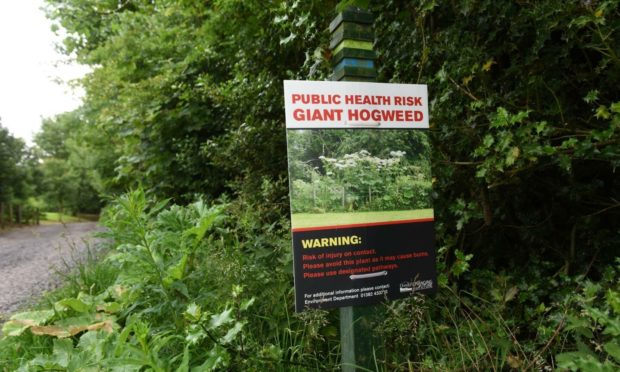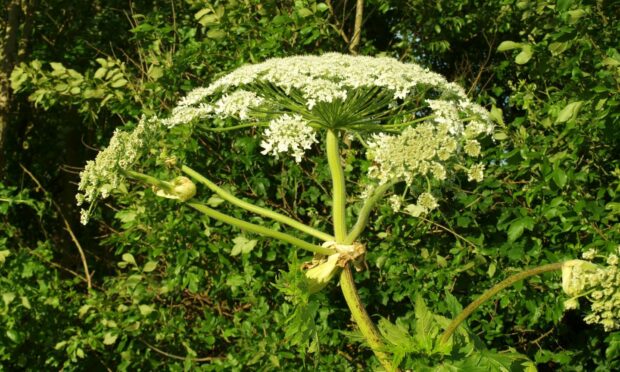Following warnings about the notoriously invasive plant known as giant hogweed in and around Aberdeen, we have answered your most pressing questions regarding this wild invader.
People in Aberdeen have been warned over the dangers of giant hogweed if they are spending time outdoors this summer.
We recently told how the weather conditions were perfect for the growth of the plant, which can cause blistering and scarring if touched.
Here, we answer some of your questions.
Q. What exactly is giant hogweed?
A. Giant hogweed is a well-known plant, which is noticeable for its height and distinctive weed flowers. Although some say it is impressive it is also very dangerous, especially at this time of year when the weather is very warm. These conditions allow the plant to grow extremely fast, rising to almost five metres.
Q. Why is giant hogweed dangerous?
A. Chemicals in the plants sap can cause extreme rashes and burns when it comes into contact with human skin. This is because the sap does not allow you skin protection from the sun and therefore leads to sunburn.
The plant can be unassuming when walkers are out and about along country trails and casually brush past it, potentially causing a transfer of the sap to skin. As previously mentioned, giant hogweed is particularly dangerous now as the weather has allowed the plant to grow to become almost unmanageable.
Q. What are the symptoms should you come into contact with giant hogweed?
A. Exposure to hogweed sap can result in painful blisters that form within 48 hours and become dark and pigmented. It can also cause scars that last up to six years, though typically only last a few months. Long-term sensitivity to sunlight is also a common symptom.
Q. How can I prevent potential exposure to Giant Hogweed?
A. Safety precautions should be used to prevent this plant from ruining you summer holidays. By wearing gloves and long clothing when handling giant hogweed, you limit the area of exposed skin for contact. Synthetic materials for clothing are best as cotton or linen can soak up plant sap. It is advised that you do not use a strimmer to cut down giant hogweed as the cuttings may spray sap in multiple directions.
Q. If you find that you have come into contact with Giant Hogweed what should you do?
A. You should immediately wash the affected area thoroughly with soap and COLD water. Also keep the area out of direct sunlight for at least 48 hours.
If a reaction does occur then using a topical steroid, applied early, can limit the severity of the reaction and ease discomfort. If sap goes into the eyes, rinse them with water and wear sunglasses. When out in direct sunlight then use a high-factor sunscreen.
These are some tips to help people recognise and to take appropriate action towards staying safe this summer and not allowing this invasive plant ruin the holidays.

